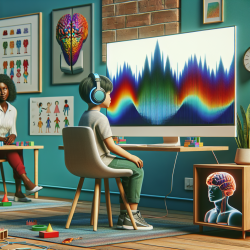As a practitioner working with severely hearing-impaired children, the task of teaching natural vowel sounds can be particularly challenging. According to the research by Daniel Ling and Clinton W. Bennett, titled "Training Severely Hearing-Impaired Children in Vowel Imitation," the key to improving vowel production lies in providing additional tactile-kinesthetic cues alongside traditional auditory-visual methods.
The study focuses on children with limited auditory sensitivity above 1,000 Hz, who often struggle with tongue placement necessary for producing different vowel sounds. Ling and Bennett conducted two experiments to test the effectiveness of tactile-kinesthetic cues in training vowel imitation.
Key Findings
- Children trained with tactile-kinesthetic cues showed superior performance in vowel imitation compared to those trained with auditory-visual methods alone.
- The tactile-kinesthetic approach facilitated more rapid acquisition of vowels, especially those requiring high-front or high-back tongue positions.
- Generalization of vowel production to untrained vowels was more pronounced in children trained with tactile-kinesthetic cues.
Implementing Tactile-Kinesthetic Cues in Practice
Based on the study's outcomes, here are some practical steps you can take to incorporate tactile-kinesthetic cues into your speech therapy sessions:
- Use Finger Placement: Allow the child to feel the tongue position by placing a finger in their mouth and the corresponding finger in your mouth. This provides direct sensory feedback.
- Combine Modalities: Start with tactile-kinesthetic cues and gradually introduce auditory-visual methods. This combination helps the child utilize multiple sensory inputs.
- Utilize Operant Conditioning: Reinforce correct vowel production with immediate rewards such as tokens or small toys to keep the child motivated.
Encouraging Further Research
While this study offers promising techniques, further research is essential to refine these methods and explore their long-term efficacy. Practitioners are encouraged to document their experiences and share findings with the broader community to enhance collective knowledge.
To read the original research paper, please follow this link: Training Severely Hearing-Impaired Children in Vowel Imitation.










